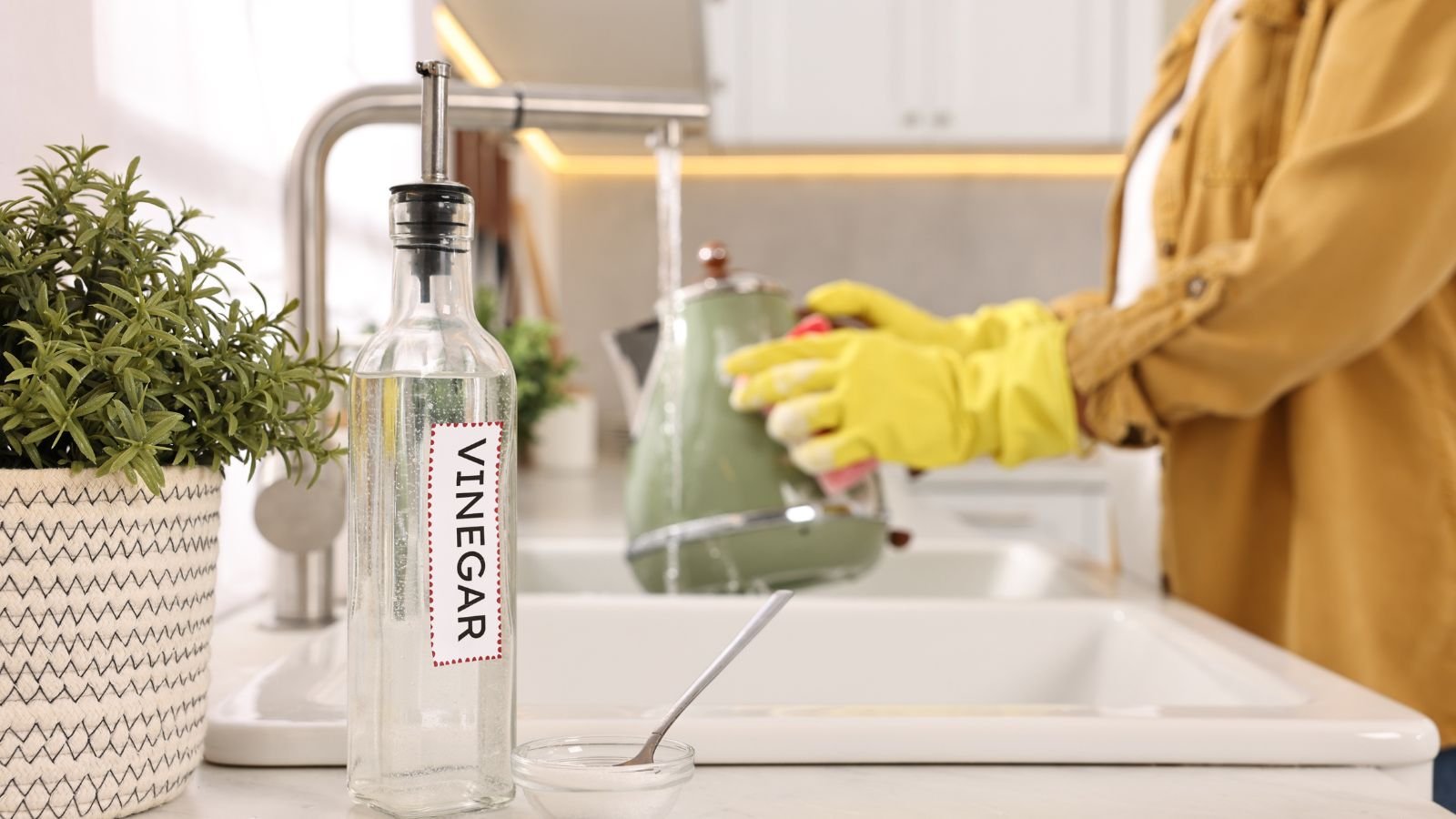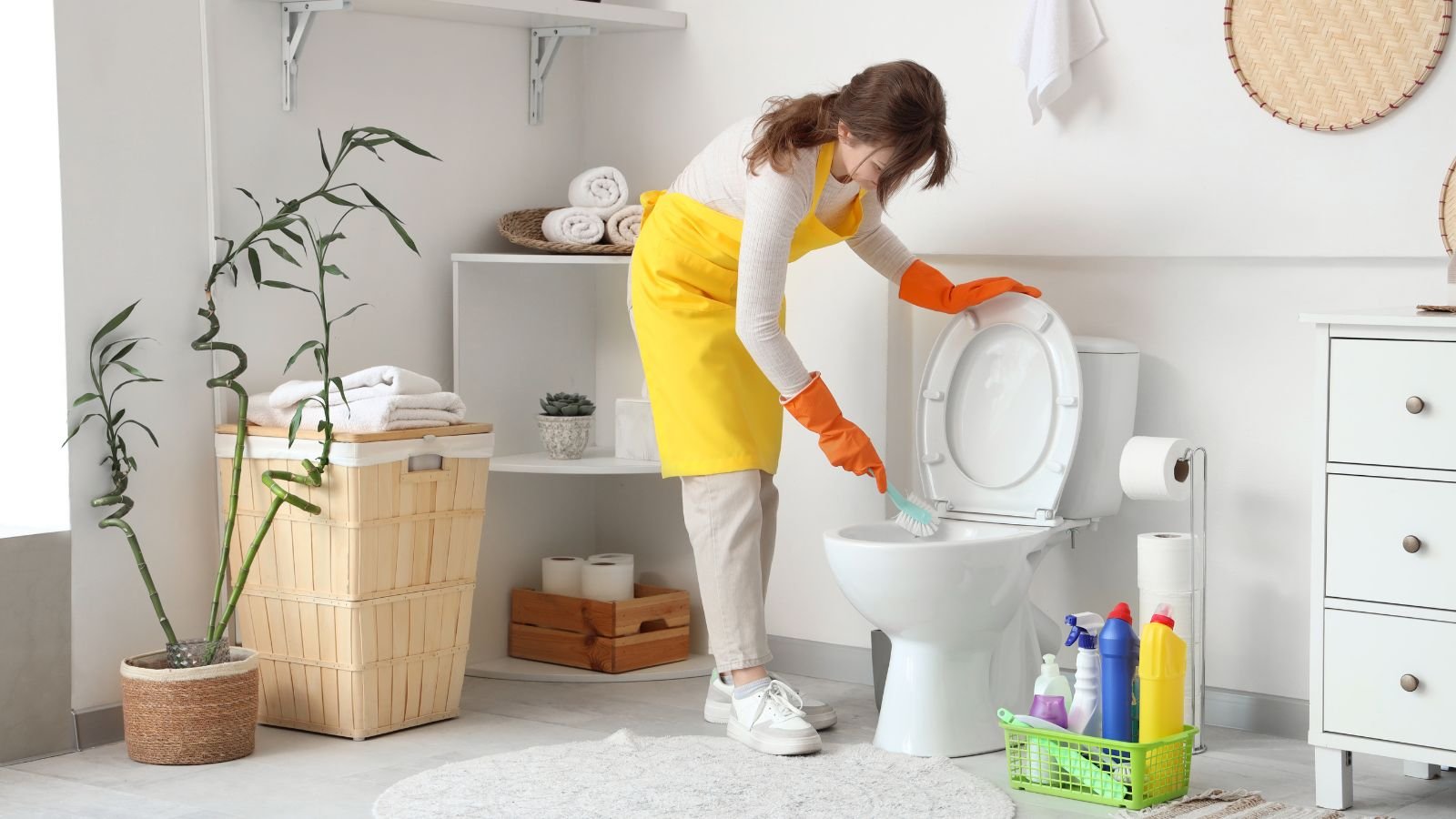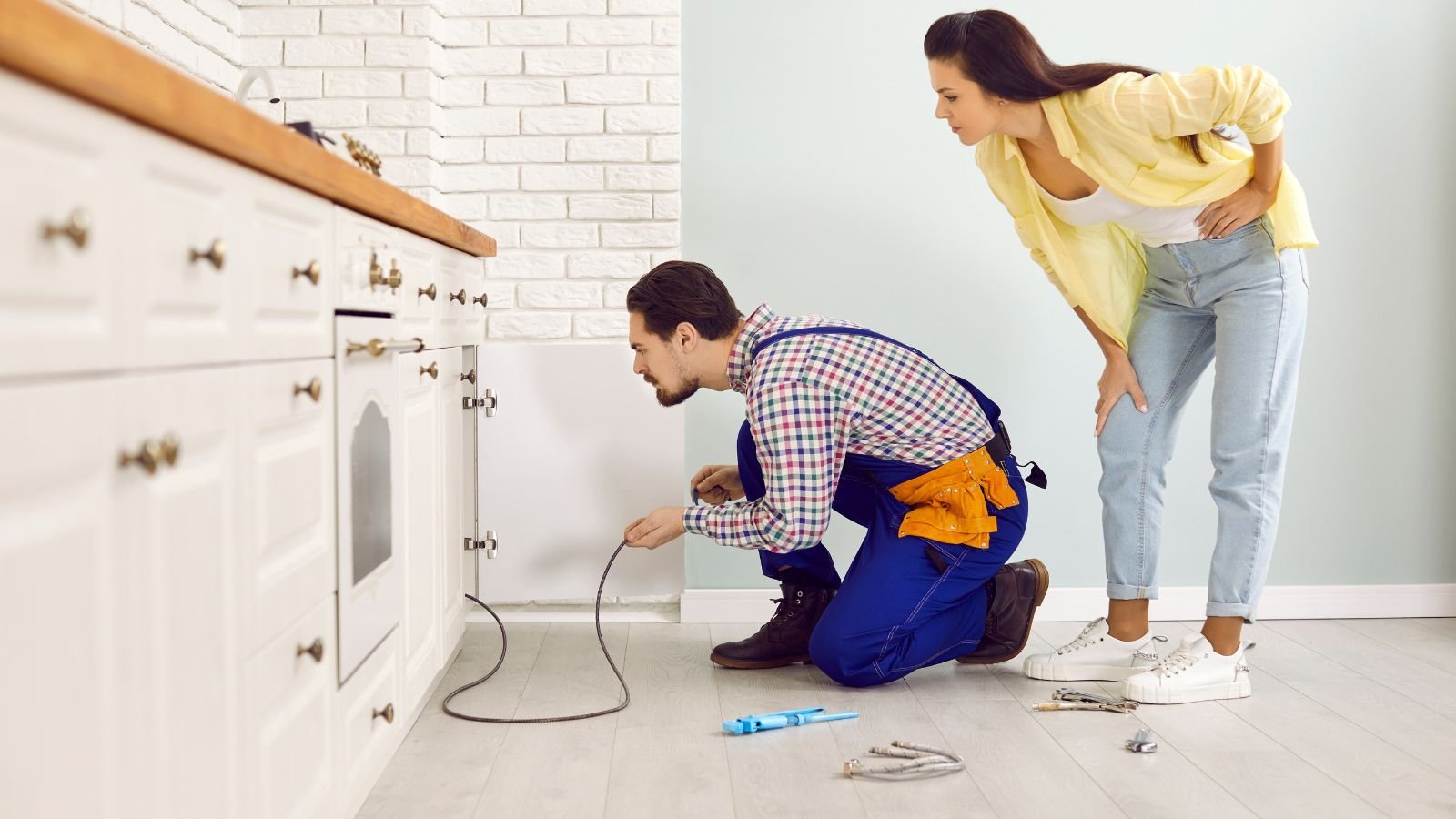You should thoroughly clean every little spot in the toilet bowl, from the top rim to the bottom drain hole. However, it is easier said than done. Cleaning rings, hard water, rust, and mold stains can be frustrating. You need the right products and methods to get rid of stubborn stains. Make sure that there is adequate ventilation and that you wear protective gear while cleaning.
Vinegar and Baking Soda

The powerful combination of two natural ingredients—vinegar and baking soda—can remove the most tenacious stains on toilet bowls. Splash two cups of vinegar (preferably distilled white) on the stains and in the drain water. After 10 minutes, sprinkle a generous amount of baking soda inside the toilet bowl. Scrub the baking soda on the stains with a toilet brush. Close the lid and let the vinegar and baking soda solution sit for 20-30 minutes.
Scrub all the stains and the inside of the bowl vigorously. Flush the toilet two to three times. The stains should have disappeared. Repeat for a few weeks if necessary.
Vinegar and Borax Powder

One of the most commonly used household cleaning supplies, borax, can also work its magic on toilet bowl stains. Scatter about half a cup of borax powder directly on the stains, followed by a cup of vinegar. Give the solution a rest for 25-30 minutes. The high pH (extremely alkaline) factor of borax loosens the stains.
Scrub the toilet bowl and rinse it. If the stains do not go away completely, repeat the process every few days.
Vinegar and Borax Powder/Baking Soda Paste

Instead of using all the ingredients separately, you can mix borax powder or baking soda with vinegar to make a paste. Administer this paste to the stains and let it sit for 15-20 minutes. The stains will start breaking down. Give the toilet bowl a good scrub and flush it. Repeat a week later if the stains refuse to budge, or try the following hacks.
Lemon Juice

Lemon is a wonderful cleaning agent due to its natural acidic and antifungal properties. Its citric acid acts as a chelating agent. It captures calcium and magnesium that cause hard water buildup. When it reacts with the stains, the deposits soften and dissolve effectively.
Squeeze or rub the lemon directly on the stains. Alternatively, mix a cup of lemon juice with half a cup of water and pour it into a spray bottle. Spray this blend on the stains and other dirty spots. Let the mixture do its work for 20-30 minutes. Scrub the stains with a scrubber and flush the toilet to clean the residues. Lemon will remove the stains, shine the toilet bowl, and leave a pleasant fragrance in the bathroom.
Hydrogen Peroxide and Baking Soda

Hydrogen peroxide is an all-purpose, non-toxic stain remover that can get rid of mineral deposits, bacteria, grime, and foul odor. Make a concoction from half a cup of hydrogen peroxide and one-third cup of baking soda. Apply the mixture to the troublesome stains in the toilet bowl. Flush the toilet after 20-30 minutes.
This method releases free radicals to slacken the deposits. It will also whiten and disinfect the toilet bowl.
Pumice Stone

Pumice stone is an eco-friendly product mined from volcanic lava and water. It is one of the most popular skincare tools. Surprisingly, it is equally suitable for deep cleaning the porcelain toilet. Its abrasive texture can effectively eliminate the most difficult stains.
Douse the pumice stone in water to soften it, then scrub the stains off with firm pressure. Wet the pumice stone intermittently during cleaning to avoid scratches on the porcelain. Rinse the toilet once you’ve finished.
Sandpaper

Sandpaper seems an odd option for toilet cleaning, but it has its uses. Buy sandpaper with extra-fine grit. Dab it a little with water. Scrub the toilet bowl till the sandpaper washes away the stains.
Keep your pace slow and pressure gentle; otherwise, the sandpaper could damage the porcelain or plastic.
Steel Wool Scrub

A steel wool scrub is another abrasive tool to scrub out the hard-to-clean blemishes and water lines on porcelain toilet bowl. Use the finest (0000-grade) steel wool scrub to protect against scratches.
Bonus Tip: Scrub with pumice stone, sandpaper, or steel wool directly on the surface or with vinegar, lemon, baking soda, or borax.
Coca-Cola

This is an unusual hack, but it’s worth a try. Coca-Cola contains carbonated water and phosphoric acid. Due to its low pH, it is mildly acidic. The acidic reaction may cause the hard buildup in toilet bowls to break down.
Pour one or two cups of Coca-Cola on the stains and leave for a few hours or overnight. Scrub and rinse.
Commercial Cleaners

You can buy commercial cleaners when none of the above results are satisfactory. These cleaners are available as liquids, gels, rim hangers, and drop-in tablets. They may contain bleaches and other harsh toxic chemicals. In the absence of adequate safety precautions, they may damage the surface or harm humans and the environment. Most cleaners also double up as disinfectants or germ-killers.
Cartridges

A few brands sell cleaning cartridges that can be installed in the toilet water tank. These cartridges release the cleaning ingredients automatically in the bowl with every flush. However, before buying, it is important to do research about their benefits, cost-effectiveness, and ease of installation.
Professional Cleaning Service

When stains refuse to go away despite trying all methods, you should hire a professional bathroom cleaning service. They usually use industry-grade chemicals to remove the toughest stains and give the toilet bowls a shiny touch.
